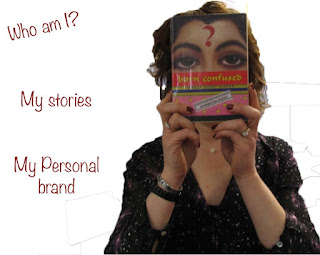 |
| The Bow, NH Rotarians donated a book to their local elementary school to honor my visit. |
My grandparents
My daughter's pancakes and mom's pizza
My students and encouraging thinking about the future
In the classroom this week, I spoke about a totally different (but strangely related) subject. I was teaching about being an effective information consumer and distributor. We discussed branding and the stories that companies are crafting about themselves to sculpt their reputations. I then asked students to turn inward and to examine what kind of personal brand they are creating online.
Like many of us, students are creating an online presence without thought to the digital trail they are leaving and the personal characterization they are sculpting for themselves. Today, our information often is saved before we even have a chance to consider its initial purpose, organization and long-term value.
Digital Life 101 asks young adults to consider their digital lives, the stories they are telling, and the information they are spreading. After viewing the short movie in the classroom, I split students into groups to discuss what they put online and what audiences they are reaching. Do they want all of the stories they share to reach all of these audiences? What personal brand are they projecting? How can they more carefully craft their personal story by using restraint and through the careful management of their social media and other online interactions?
It took me 20 years to craft my stories for diverse audiences. I had time. Our teens might not. By having them identify what is important to them now and by helping them focus in on personal branding, my purpose is twofold:
- I hope to help young people gain a greater awareness of how their life fits in with their larger communities, to feel part of something bigger than themselves, and to gain an appreciation for their place in history.
- But, I also hope to help them realize that the "stories" they tell now, those little bits of information they leave all over the Internet, are precious, potentially dangerous, and open to larger audiences they may not have considered. They may not be talking to Rotarians yet, but their words have potential and can make an impact on our culture.
